Continuity Between Poles on 2 Pole Breaker
A double pole breaker is a type of circuit breaker. It is a security switch that secures all the house electrical circuits. Furthermore, it is used for a specific voltage range. Besides, we have a single-pole breaker that bears different features. We will examine what the difference between a single pole and double pole breaker is in closer depth at Linquip.
You can browse Linquip's website to learn more about the single pole and double pole breaker and to find out everything you need to know. We have experts in power transmission and distribution at Linquip that are available to help answer any questions you might have regarding circuit breakers. If you have not read Linquip's article titled " What Is Circuit Breaker? " it is highly recommended that you do so right away.
It might be helpful for you to know that Linquip is offering you the opportunity to join as an Expert member and gain access to all the benefits Linquip provides. Are you interested in contributing a Guest Post to Linquip? In that case, you would be able to do so by submitting your content on the Linquip platform as a guest.
What is the Difference Between a Single and Double Pole Breaker?
The difference between a single pole and double pole breaker lies in voltage, amperage, and how they are wired.
- A single-pole breaker provides 120 volts, 15-20 amps, and has one hot wire and one neutral wire.
- How it is wired? A hot wire and one neutral wire are paired with a single-pole breaker. Just this particular breaker moves while there is an overload on a single-pole breaker circuit.
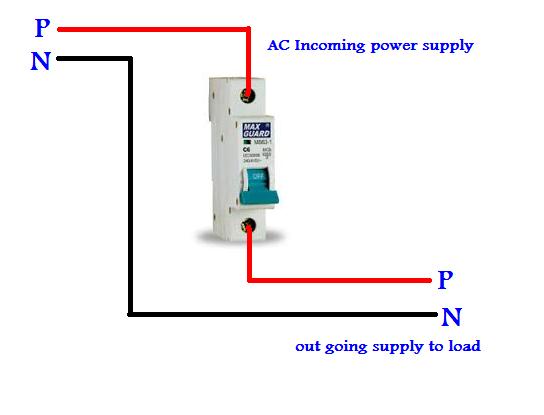
On the other hand:
- A double pole breaker provides 240 volts, 20-60 amps, and has two hot wires that share one neutral wire.
- In a double pole breaker, a 240VAC machine can accommodate up to 60 amps with two hot wires. Each wire requires a different breaker because if the other one is operated, the other must still cut the circuit, otherwise, the wire stays carrying current.
- Circuits of a double-pole breaker have more power and that's why it is rated for higher currents.
- In a double pole breaker, the wires are fatter than a single-pole breaker.
The story of the difference between a single pole and double pole breaker is not finished. Let's read more:
A single-pole breaker regulates normal lighting, power outlets, and other household appliances. It is relatively narrow and takes a single position in the breaker box of the home.
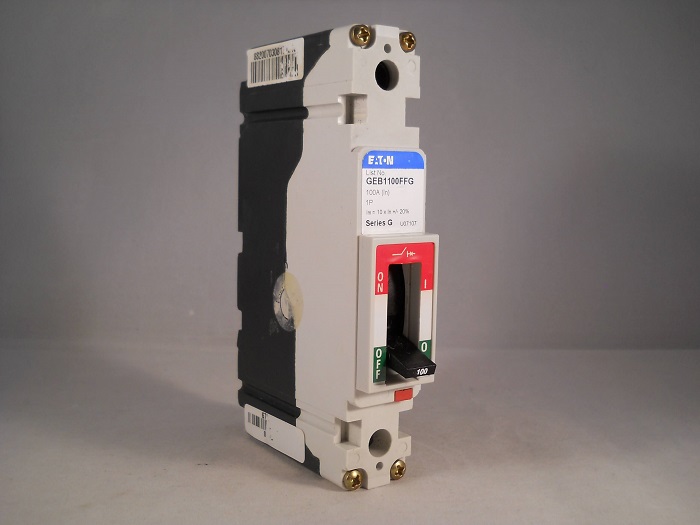
On the other hand, A double pole breaker is a pair of separate pole breakers stacked over each other. Two power legs, each with 120 volts but in the opposite step, are paired for those systems with 240 volts. All legs have 120 volts, but over the two heating legs, there are 240 volts, which is twice as much as 120 volts. A circuit breaker must be connected to each 120-volt leg to safeguard 240-volt devices. In this case, a double pole breaker is used, consisting of two single circuit breakers with the trip handles being attached physically. Thus, if any hot leg draws too much electricity, the two breakers go simultaneously and stop all the voltage on the unit.
The way Electricity Gets to the Panel
In a double pole breaker, the electric panel, where the power comes from the transmission line, is wired to each circuit in the house. The line voltage is more or less limited by a transformer mounted on the power pole. This is often reduced to 220 volts from wire resistance and other factors. This energy reaches the house as two hot wires with the output voltage of the transformer between them. Each hot wire is attached to a hot bus bar and a third bus – the neutral bus – is connected by a third wire to the transformer. The voltage between any hot bus and the neutral bus is 120 volts, and the voltage between the two hot buses is 240 volts.
how to wire a double pole breaker?
Well, as said earlier, one difference between a single pole and double pole breaker is how they are wired. In the following, we will examine the double pole breaker wiring.
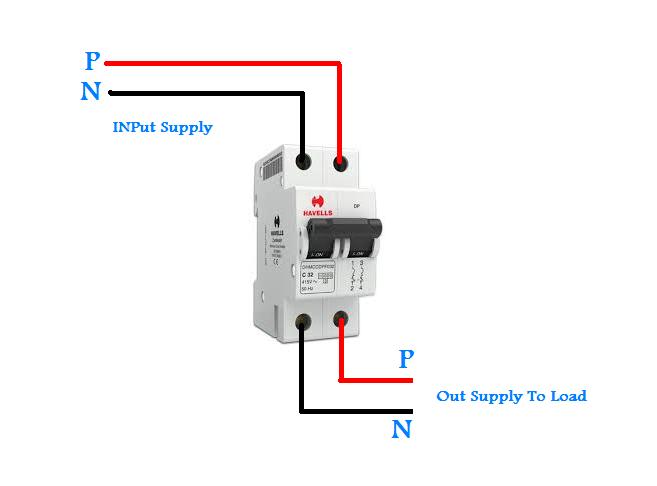
Generally, there are two hot wires connected with a single neutral wire in a double pole breaker. That means if one of the hot wires has a short circuit, both trips. This can be used for the service of two separate 120 Volt circuits or a single 240 Volt circuit.
Let's get into steps about how to wire a double pole breaker.
- Switch off the power to the service panel at the main breakers. These breakers are numbered and typically positioned at the top of the service panel.
- Remove the breaker panel by unlocking the attachments at the corners.
- Make sure another double breaker has space. Two adjacent slots are required horizontally. You will have to transfer a breaker from the bus bar based on the configuration of the current breakers. If no slots are open, you need to get a subpanel mounted by an electrician.
- Remove the outer part of the service panel, one of the round knock-out plates. The wires running into the box pass through these holes. A cable connector should be installed in the hole. The locknut of the connector on the inside of the panel is installed.
- Feed the wires through the cable connector from the heavy-duty system and tighten the clamping screws. Make sure you feed enough cable to reach the circuit breaker. Tighten the locknut when the cable is tightly installed.
- Attach the white wire from the cable to the neutral bus bar that can be identified from the neutral wire contacts on other circuits. Attach the bare copper or green ground wire, if appropriate, to the neutral bus bar.
- Insert the black and red wires in the double poles and tighten the screws.
- Place the breaker in the hot-bus bars. It will then slip in without being pushed into position.
- delete the slot on the panel covering the breakers. Reinstall the panel. Switch the main breakers on.
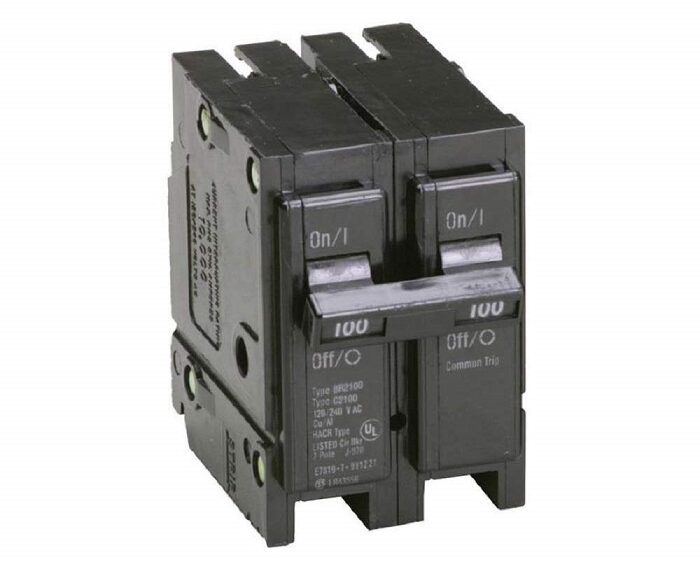
Double pole breaker with one switch
A double pole breaker with one switch is an internal movement breaker. The two phases of disconnection are linked inside the breaker such that power is killed on both phases if one phase leaves. Because all stages are inside the breaker, it's an inside trip. Resetting the single switch will reset both phases inside of the breaker.
60 amp double pole breaker: How to install it?
There are two hot wires, one of them with red and black insulation, and one of them is neutral, covered with white insulation, in the wire of a 240-volt circuit. A bare ground wire is used as well, but it does not qualify as a conductor. If the cable is inserted into the panel, split the wires and strip off each one's end one inch of separation. To install the 60 amp double pole breaker, then make the following connections:
First, connect the white wire to the neutral chrome bus with its white wires. Then, connect the ground wire to the ground bus, which is equally connected by more ground wires. After that, connect the red wire to the one lug of the 60 amp breaker, and connect the black wire to the other lug. Finally, place the breaker before an empty slot when all is close and snap it into place.
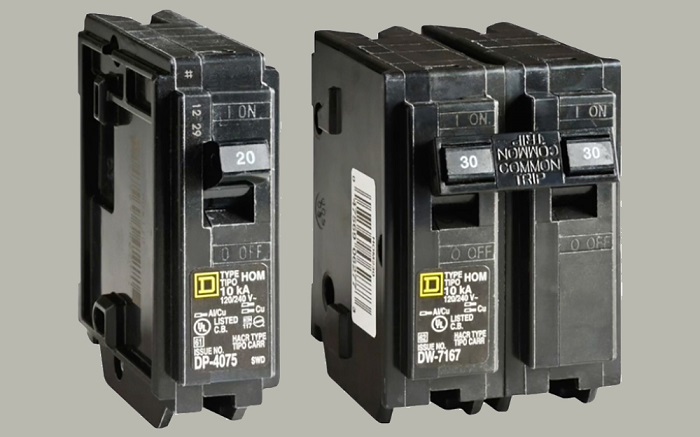
Is It Legal to Use Double Pole Breakers?
It is perfectly acceptable to use tandem circuit breakers if the panel board is configured for tandem circuit breakers and they are installed in areas where they're permitted.
Could a Double Pole Breaker Be Replaced by Two Single pole Breakers?
With a double pole switch, you can control two lights on separate circuits or a light and a fan. Because only one side of the switch is utilized in place of both sides, a double pole switch can easily be wired to function as a single-pole switch.
Download PDF for Double Pole Breaker
If you would like to have a PDF version of this article to read, please click on the download link below.
linquip.com-Double Pole Breaker Difference Between a Single and Double Pole Breaker
Conclusion
Breakers are part of an electrical system to defend against the excess current. There are three main types of breakers: single pole, double pole, and three pole breakers. In this article, we focused only on two types. We tried to simply talk about the difference between a single pole and double pole breaker. We hope you found this article useful. But, if you need to learn more about the double pole breaker, don't delay and register at Linquip and contact us. We are here to help.
Source: https://www.linquip.com/blog/double-pole-breaker/

0 Response to "Continuity Between Poles on 2 Pole Breaker"
Postar um comentário